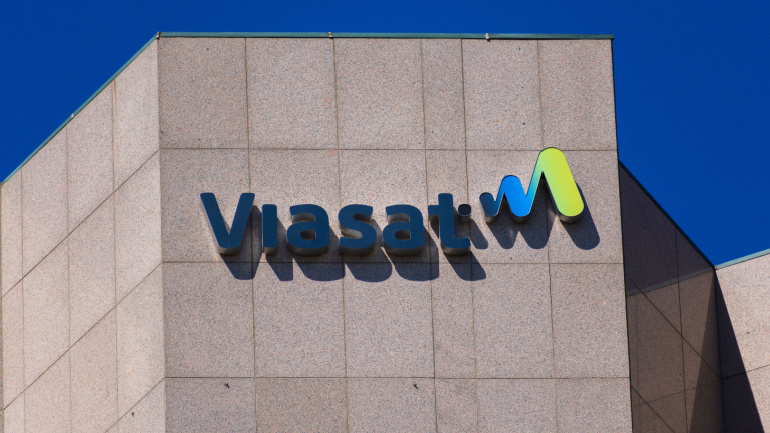After the whopping $6.2 billion acquisition by Inmarsat, Viasat is readying for a major reorganization, with a planned 10% workforce reduction. The move, affecting approximately 800 roles, aims for a substantial year-on-year cost-saving starting from 2025. Despite the promising financial outlook, the firm accepts the substantial costs linked with these transitions, yet considers them a vital investment for the future.
The European Commission clears Inmarsat’s acquisition by Viasat, assuring competition in the in-flight broadband landscape. While the market anticipates increased opportunities for current players and new entrants, upcoming deals like SES/Intelsat and Eutelsat/OneWeb may pose complex challenges for regulators.
Viasat’s acquisition of Inmarsat advances as the UK’s Competition and Markets Authority grants unconditional approval, easing market competition concerns for in-flight Wi-Fi services amidst a rapidly evolving satellite communications sector.
Inmarsat collaborates with Hyundai-owned Supernal to connect electric vertical take-off and landing (eVTOL) aircraft to its Velaris comms service, addressing beyond visual line of sight challenges, spurring competition with terrestrial network operators like Nokia.
Inmarsat, a major supplier of international mobile satellite communications services, and Viasat, a worldwide communications company, have announced that the Australian Government’s Foreign Investment Review Board (FIRB) has stated that it has no concerns about the intended merger of the two companies. The proposed deal has already received numerous important regulatory approvals, most notably from the Committee on Foreign Investment in the United States and from the UK Government under the National Security and Investment Act. The most recent permission for the deal is the FIRB’s clearance of Viasat’s proposed acquisition of Inmarsat under the Foreign Acquisitions and Takeovers Act of 1975. Australia is a large market where the two businesses have substantial consumer and commercial ties. Inmarsat and Viasat announced that they will merge their two businesses to become a new global communications powerhouse in November 2021. The transaction is expected to be completed in the second…
Viasat, a worldwide communications company, and Inmarsat, a major UK-based supplier of global mobile satellite communications services, have announced the signing of a formal agreement under which Viasat will buy Inmarsat for $7.3 billion. The merger will establish a global communications leader with increased size and breadth to link the globe more economically, safely and securely. The new organization’s complementary assets and resources will allow the launch of innovative new services in both the mobile and fixed segments, giving customers more options in broadband communications and narrowband services, such as IoT. The merged business intends to combine both companies’ spectrum, satellite and terrestrial assets into a worldwide high-capacity hybrid space and terrestrial network able to offer exceptional service in the rapidly developing commercial and government sectors. Together, these businesses will establish a formidable multi-spectrum, multi-orbit powerhouse. With production and people capacity around the world, the new company…
Global satellite communications leader Viasat, Inc. has joined forces with Safran Data Systems to introduce InRange, a revolutionary system ensuring continuous telemetry data relay for launch vehicles in flight. This collaboration aims to liberate launch providers and spaceports from ground network dependencies during missions.
As the year draws to a close, the Radio and Internet Services Department (RDI) is inching closer to launching private local spectrum licenses for enterprise clients. Set to equip them with the 3.5GHz spectrum and power the assembly of private 5G networks, this promises to transform sectors such as Virtual Reality and autonomous vehicles. However, some concerns have borne by airports and ports on fair allocation.
Telecom operators tapping into satellite partnerships could see a tremendous financial boost, as Juniper Research predicts a revenue uplift of US$17 billion from 2024 to 2030. With reliable geostationary orbit satellites from operators like SES and Intelsat, these partnerships promise dependable connectivity and advanced billing infrastructure to a broad customer base. Significant advancements are expected within the satellite-based 5G network landscape, transforming coverage, throughput, and resilience.
OneWeb’s constellation of low Earth orbit (LEO) satellites will enhance network coverage for Softbank, particularly in challenging regions. The move aligns with Softbank’s ‘Ubiquitous Network’ strategy, which unifies diverse non-terrestrial network (NTN) solutions to expand digital services. Besides its surprise partnership with SpaceX’s Starlink, Softbank continues to boost its stake in OneWeb, supporting its Japanese launch and integration into the Ubiquitous Network.













